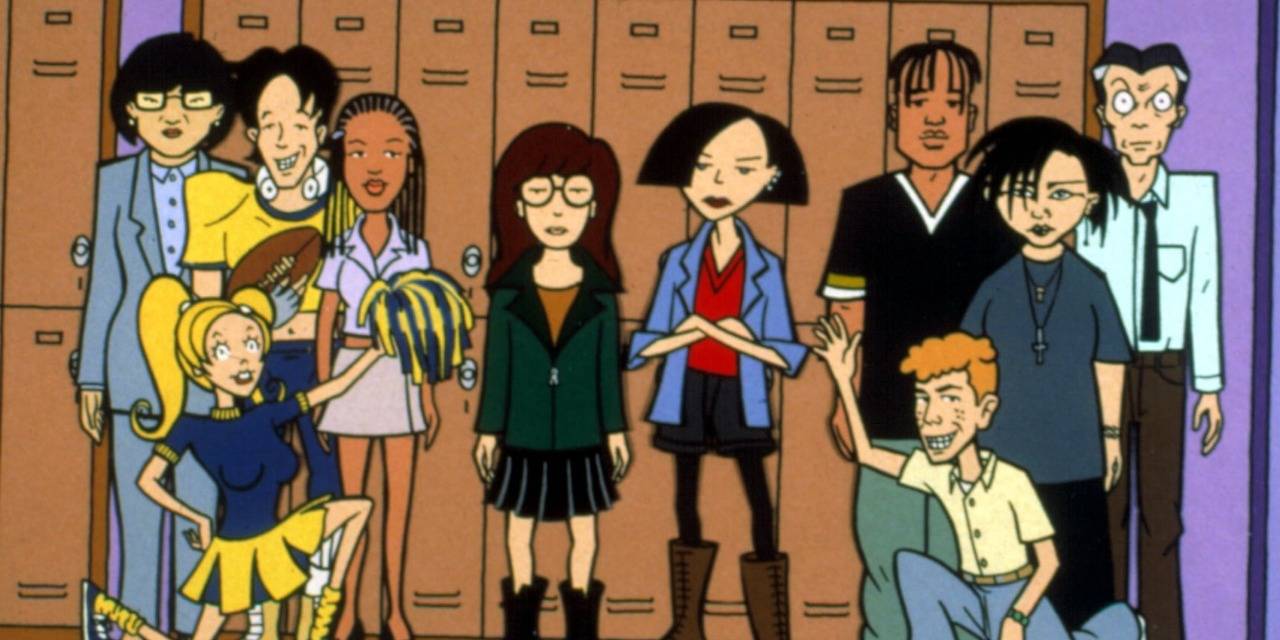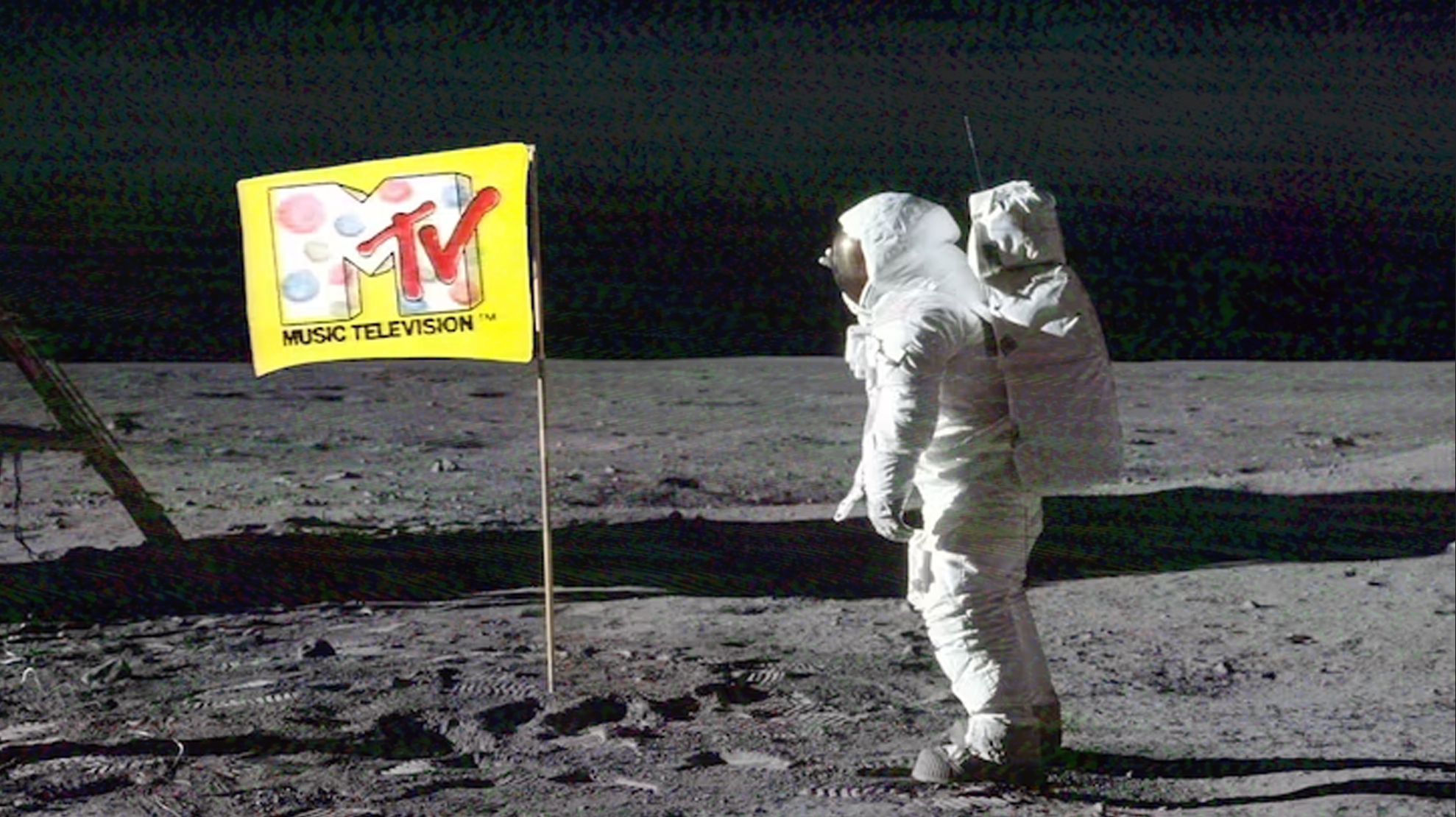Its easy to write a blog post about the start of MTV- it played music videos, it shaped the way audiences interacted with artists and changed forever the music landscape. No longer did you have to imagine what each artist looked like in action, or what their visual identity of their music might be – here they were, in full colour giving you everything you needed to understand the music. In those pre-internet days, it was rare to see electronic or left-field pop artists on mainstream television, so it was largely thanks to MTV Europe (which started broadcasting in 1987 in the United Kingdom, Denmark, Finland, the Netherlands and Sweden; a year later MTV Europe expanded to West Germany, Belgium, Switzerland, Greece and Norway) that the likes of Aphex Twin, Bjork, Prodigy Blur and many more were discovered by US teens.
But come the mid 1990s MTV was doing far more that playing music, it was defining a generation with its non-music TV shows; and this impact is still felt in the modern media landscape today. It paved the way for social and content driven media and entertainment encapsulating the feelings of Gen X and early millennials. You can split MTV in to 4 categories of programming News, Politics, Animation and Reality aside from music, each of these had an impact on culture, and audiences that have gone on to effect future and current youth generations- even if they wouldn’t be caught dead watching MTV.
News
MTV News got started around 1984. At the time, MTV mostly ran music videos, Doug Herzog was hired as MTV’s news director. His history and reputation was strong as he had been working at “Entertainment Tonight” and had caught the network’s attention with a Bruce Springsteen interview scoop. However it was not an easy sell – people couldn’t understand why MTV wanted to make news or why the audiences would care. It took the Live Aid concert for MTV news to be taken seriously, as staff helped coordinate live interviews of some of rock music’s biggest names, MTV established itself as the place for most teens to get their news from. Encompassing everything from entertainment and showbiz to politics and current affairs expanding from the hourly news updates to full length programming.
In 1987 Kurt Loder was hired to anchor a stand-alone program “The Week in Rock.” Quickly people saw the potential of delivering the news in a non-stuffy format to further engage MTV’s core viewers who loved music videos, movies and the mall. With segments like “Free Your Mind” talking about hot button topics and opinions at the time from closed discussions to things people could talk about openly influencing audiences across the globe.
This pushed the channel to go further with hard hitting news and longer form documentaries including “Hate Rock” and “Gangsta Rap”, focusing on music subcultures and violences. The shows continually won award and started to command the authority to interrupt standard programming for breaking news. The first time this happened was in 1994 when Kurt presented a special news report on the death of rock superstar Kurt Cobain and his suicide.
They continued released special programming well in to the 21st century, notably again in September 2001 with the terrorist attack in New York. What followed was a schedule of dedicated news shows focusing on community and youth centric information over the following weeks.
Its easy to watch these shows and see the blueprints for further youth culture brands including LadBible and Vice with a blend of bite size news and current affairs around fast paced editing and cutting trends in editing. MTV news sadly ended in 2023 (a year that saw many alternative news desks close including Vice and Buzzfeed). Like many, MTV news didn’t react quickly enough to the rise of the internet and social media despite being the original news format that is now followed by many short form news sites.
Politics
By the 90s MTV was king of youth culture, and combined with its news arm had a influential voice among some of the hardest to reach voters – those aged 18 – 24. By 1992, all three presidential candidates George H.W. Bush, Bill Clinton and Ross Perot — appeared in interviews on MTV news as part of their campaign swings with Clinton taking part in an hour long special on the show “Young Voters Forum”. This practice continued with presidents appearing on MTV news right up until Obama in 2012.
It was during a 1994 appearance by then-President Clinton at an MTV town hall to address the rise of violence; an audience member famously asked him: “Is it boxers or briefs?”

The moment became a international national sensation, decades before going viral was part of the aim, everyone was talking about the President and his underwear. That question, and Clinton’s response (“Usually briefs”), shifted the boundaries of what was viewed as acceptable political discourse, and feed into the continued connection MTV fostered with its audiences.
MTV never again quite got the success it did in the early 90s presidential running, but it did have an impact on voters and voter turnout. They continued to feature political items both on the main TV stations bot also across social media and home entertainment set ups. As part of MTVs’ ongoing “Choose or Lose” effort to mobilize more than 20 million 18-30 year-olds to vote, MTV broadcast an hour-long special event that brought together presidential candidates Hillary Clinton, John McCain and Barack Obama, as well as eight young veterans for an intimate discussion on the 5th anniversary of the Iraq war.
Animation
MTV was one of the top producers of quality animation in the western world, a rival to such animation giants as Cartoon Network and Nicktoons in the 90s and start of the 00s. With a bend to older teens and adults they filled the space later taken over by Adult swim with a host of original animated shows. Most of MTV’s cartoons are known for their dark humor, sexual jokes, graphic violence, pop culture references, and irreverence.
MTV’s animation department was established in the late 1980s, when it made several of the animated shorts that aired as bumpers for the network, often made up of the same teams working at Nickelodeon in thre same time period. Liquid TV started in 1991 with a regular anthology of animated shorts, some of which proved so popular that it became a show in its own right. Shows featured a range of styles from traditional hand drawn to CGI and claymation, giving underground and indie animators exposure unseen on mainstream channels.
Out of Liquid Television came a series of shows that defined the channel and the audience, with Beavis and Butt-Head, Daria, Celebrity DeathMatch and Æon Flux leading the charge of clever relatable animations.
Æon Flux was the brain child of animators and creators over at Nickelodeon, frustrated with working on Rugrats and the limited movements of the characters, they aimed to created something as far removed from the child friendly cartoons as they could thus creating the dominatrix clad super spy. Æon Flux is set in a surreal German Expressionist style futuristic universe, a bizarre dystopia future populated by mutant creatures, clones, and robots we see the titular character engage in bloody violence. The show ran from November 30, 1991, until October 10, 1995, with film, comic book, and video game adaptations in the following years.
In stark contrast to Æon Flux stands Daria, a spin off show based on a back ground character from Beavis and Butt-Head. Daria became famous as soon as it launched in March 1997 for both its social and political commentary as well as its ability to connect with that special type of teenager who always felt they were too smart for their own good.
The plots of Daria largely concern a juxtaposition between the central character’s jaded, sardonic cynicism and the values/preoccupations of her suburban American hometown of Lawndale. Featuring relatable characters in familiar settings it struck a cord with teens across the globe- and provided a much needed female audience for the male dominated MTV. To this day, Daria is insanely re-watchable and still holds its own as an angsty awkward need drama, with many of the 90s references still connecting with modern audiences.

With near constant rumours and hints at reboots, re makes and new episodes of many of the MTV classic shows its clear to see the financial and good will MTV animation made for the wider Paramount company. It cannon be under estimated how important the Liquid Television features were and what effect they had on the animation landscape, paving the way for Adult Swim, Toonami and other adult animation.
Reality
MTV didn’t create reality TV, which had existed on and off since the 1970s but they dipped a toe in to reality TV in the 90s with The Real World which premiered on MTV in 1992. This set the stage for the scores of reality shows we are all familiar with now, everything from The Osbournes & The Hills to The Only Way is Essex to Survivor all have origins in MTV.
These shows were a massive success, they drew in audiences and had low budget requirements. Which is why MTV stopped showing music videos and by 2001 showed 36.5% less music videos than they did in 1996 (thats about 8 hours a day of music). But what they did in the process was create a style of television that has shaped the way we consume tv to this day – Reality TV. Gradually, then suddenly, the videos and music-related shows became sidelined by reality shows, mostly hosted or anchored around musical personalities like pop stars Jessica Simpson and Nick Lachey’s Newlyweds, the family dynamics of metal star Ozzy Osbourne in The Osbournes and the car make-over show Pimp My Ride, hosted by rapper Xzibit.
MTV reality formats fall in to 4 rough categories; the celebrity fly on the wall which follows a celebrity in their day to day lives, with the first series in the format airing in 2002 with Meet The Osbournes that documented and followed Ozzy Osbourne and family. The celebrity presented show the gives a peak into the lives of people (famous and otherwise) this would include shows like CRIBS and Pimp My Ride. Lastly you have the easiest to mass produce and the format that has stood the test of time – shows focusing on average people with shows like room raiders, My Super Sweet 16, Next, Jackass.
In June 2009 one of the most influential shows first aired on MTV, 16 and Pregnant. The show premiered as a ground-breaking documentary , which after four seasons continues to provide viewers with an authentic, honest and intimate look inside the lives of teens and unexpected pregnancies and the challenges challenges with being a parent at a young age. 16 and Pregnant has been cited in academic papers detailing the impact on the decline of the teen birth rate, and a study in 2010 by the National Campaign found that 82% of teens who have watched the series think the show helps teens better understand the challenges of teen pregnancy and parenthood, and how to avoid it. Later the same year MTV ran the series Teen Mom which continued following the new parents

